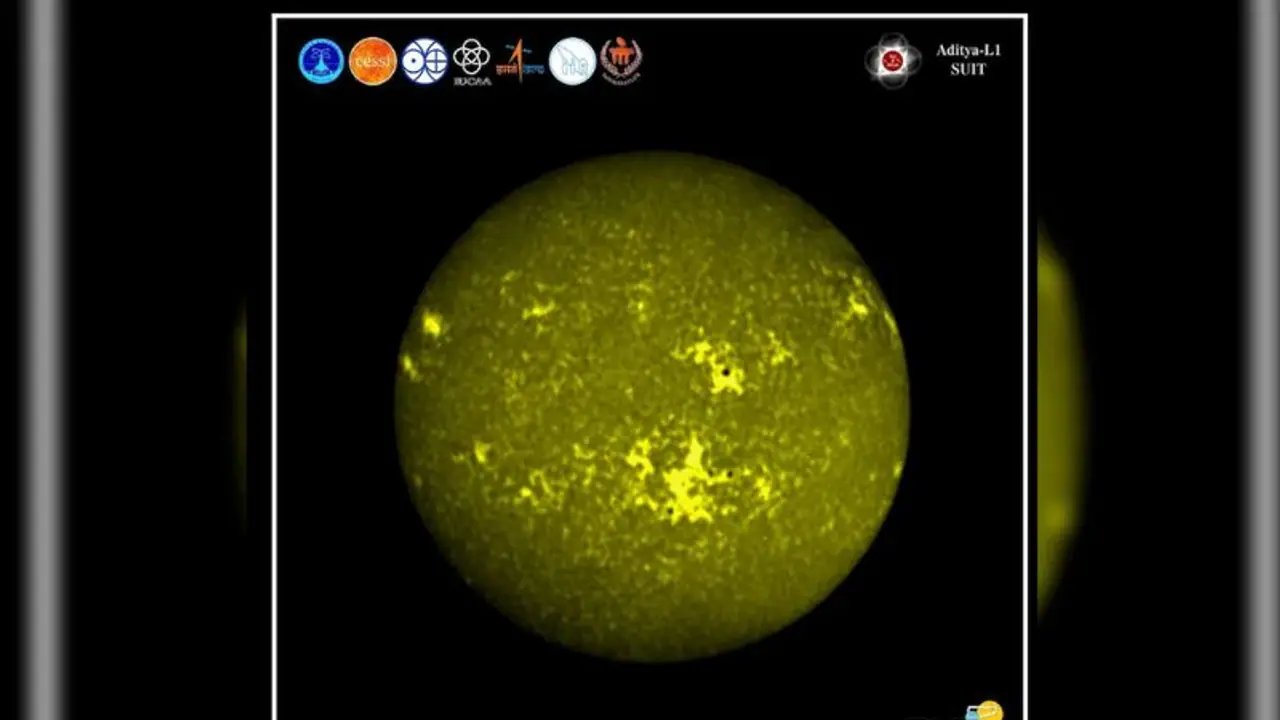This remarkable feat, accomplished by the Solar Ultraviolet Imaging Telescope (SUIT) instrument on board the Aditya-L1 spacecraft, offers pioneering insights into the intricate details of the Sun's photosphere and chromosphere.
In a groundbreaking achievement, India's Aditya-L1 Mission, led by the Indian Space Research Organisation (ISRO), has successfully captured the first-ever full-disk images of the Sun. This remarkable feat, accomplished by the Solar Ultraviolet Imaging Telescope (SUIT) instrument on board the Aditya-L1 spacecraft, offers pioneering insights into the intricate details of the Sun's photosphere and chromosphere.

The SUIT instrument captured these historic images in the 200-400 nm wavelength range, providing a unique perspective on the Sun's surface and outer layer. These near-ultraviolet images offer scientists a comprehensive view of features such as sunspots, plage, and quiet Sun regions, allowing for a detailed analysis of the solar dynamics.
The images obtained through SUIT observations are not only visually stunning but hold immense scientific importance. They enable researchers to study the dynamic coupling of the magnetized solar atmosphere, shedding light on the Sun's complex behaviors. Furthermore, these observations will aid scientists in establishing stringent constraints on the impact of solar radiation on Earth's climate.
"Aditya-L1 Mission: The SUIT payload captures full-disk images of the Sun in near ultraviolet wavelengths The images include the first-ever full-disk representations of the Sun in wavelengths ranging from 200 to 400 nm. They provide pioneering insights into the intricate details of the Sun's photosphere and chromosphere," wrote ISRO in a post on X.
The revelation of sunspots, plage (bright regions associated with strong magnetic fields), and quiet Sun regions provides valuable data for understanding solar activity. Analyzing these features allows scientists to comprehend the Sun's magnetic processes, radiation patterns, and their potential implications for space weather and our planet.
ISRO's Aditya-L1 Mission marks a significant stride in solar science, contributing to our understanding of the Sun's behavior and its influence on the Earth. The successful capture of full-disk images in near ultraviolet wavelengths positions India as a key player in advancing solar research and space exploration.
The wealth of information derived from Aditya-L1's observations is expected to open new avenues for space research and climate studies. As scientists delve deeper into the dynamics of the Sun-Earth relationship, these images may offer critical insights that contribute to advancements in space science and our ability to predict and manage space weather impacts.
